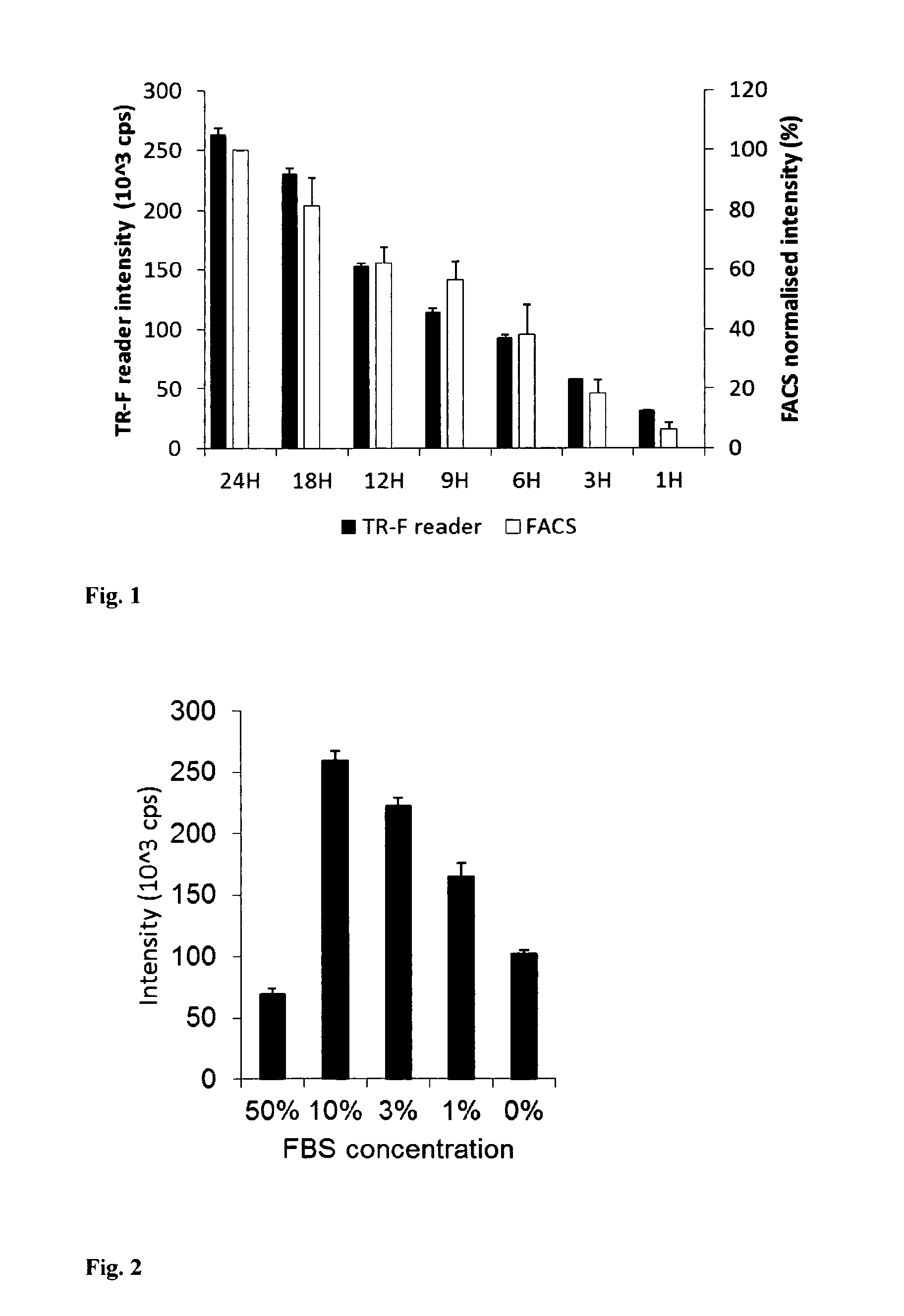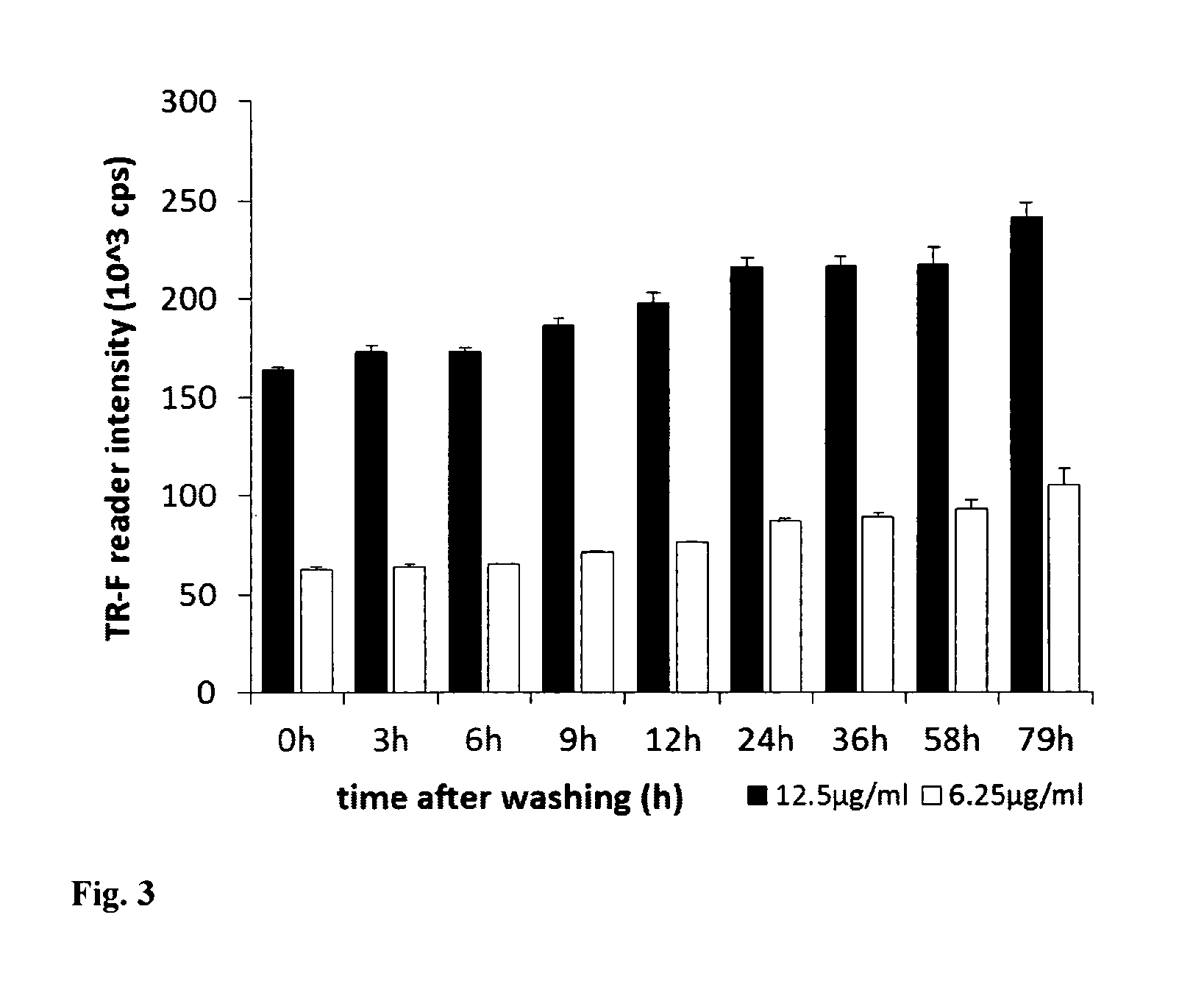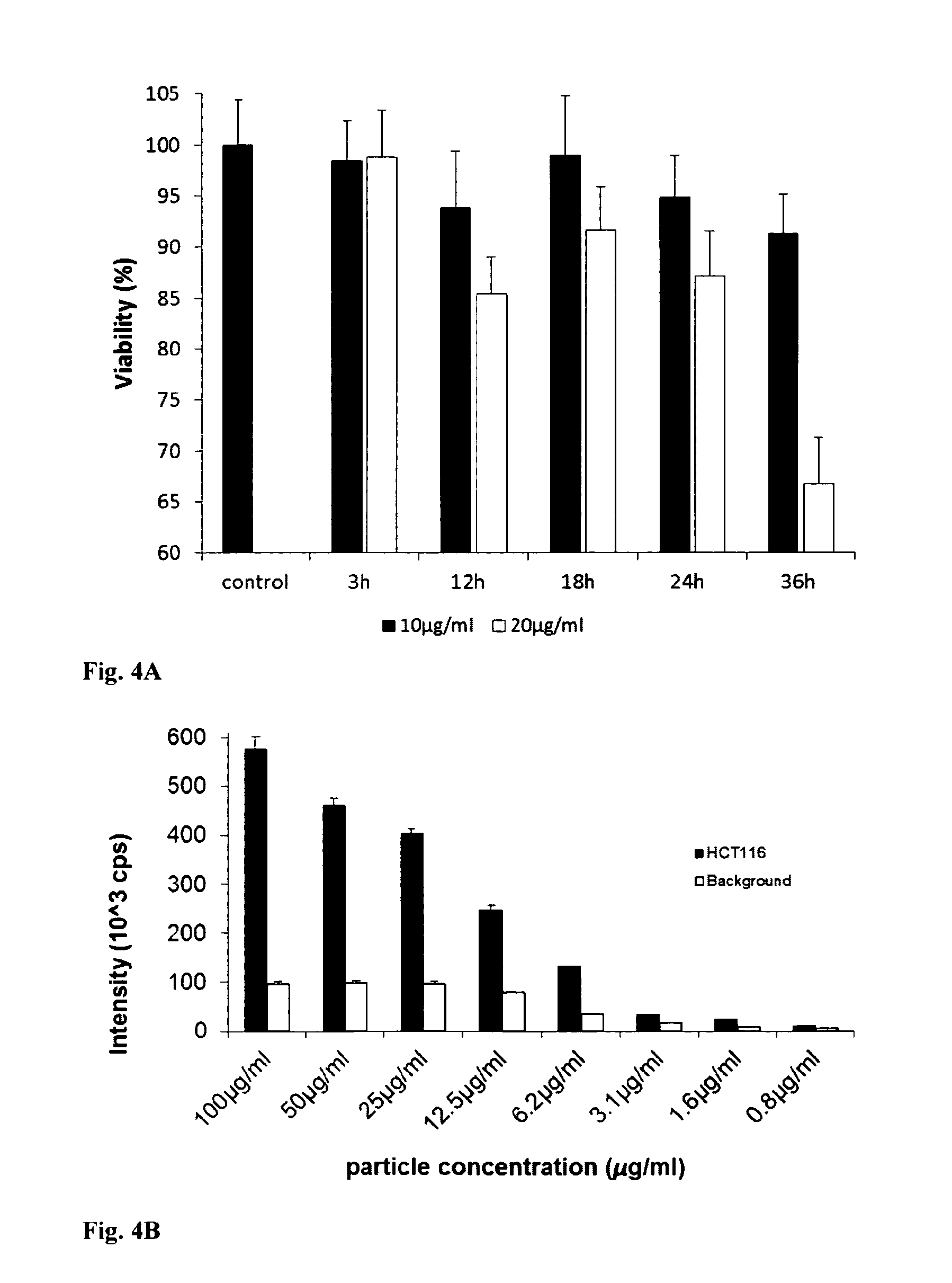Method and probe for monitoring oxygen status in live mammalian cells
- Summary
- Abstract
- Description
- Claims
- Application Information
AI Technical Summary
Benefits of technology
Problems solved by technology
Method used
Image
Examples
example 1
Fabrication of the Nanoparticle O2 Probe
[0064]1.5 g of RL-100 polymer and 22.5 mg of PtTFPP were dissolved in 750 g of acetone. The solution was placed in a 5 L beaker to which 4 L of deionized water were added over 20 s under rigorous stirring. Acetone was subsequently removed under reduced pressure and aqueous dispersion of the beads was further concentrated to approximately 75 mL. Traces of aggregates were removed by filtration through a paper filter. The resulting solution was filtered through a sterile filter to produce stock of O2 probe for intracellular use. It was aliquoted and stored in a dark place at +4° C. for several months for further use.
example 2
Assessment and Optimisation of Cell Loading
[0065]Mouse embryonic fibroblast (MEF) cells were cultured in 96-well plates using DMEM medium supplemented with 10% of foetal calf serum, CO2 incubator at 37° C., until they reach high confluence (periodically changing medium, if required). Stock solution of the PtPFPP-RL100 probe was diluted to the desired concentration with appropriate growth medium (determined by the cells and culturing conditions) and added to the wells with growing cells at the required final concentration (usually 1-10 μg / ml). Cells were incubated with probe, typically for 6-24 h, and then washed two times with fresh medium. Similar experiments were conducted with other cells, probe concentrations and incubation times. The efficiency of cell loading was assessed by measuring phosphorescence intensity signals in each well on a fluorescent reader Victor2 (Perkin Elmer) in time-resolved mode under the following settings: excitation −340 nm, emission −642 nm, delay time ...
example 3
Analysis of Probe Cytotoxicity and Localisation
[0068]MEF, PC12, HepG2 and HCT116 cells were loaded with 10 μg / ml of PtPFPP-RL100 probe as described in Example 2. Probe cytotoxicity was assessed by measuring total ATP levels in loaded cells and comparing them with unloaded cells. FIG. 4A shows that the probe has low intrinsic toxicity, particularly when used at low concentrations (10 μg / ml) and short loading times (14h and background (non-specific binding to plate). Concentrations higher than 25 ug / ml had a toxic effect on cells.
PUM
 Login to View More
Login to View More Abstract
Description
Claims
Application Information
 Login to View More
Login to View More - R&D
- Intellectual Property
- Life Sciences
- Materials
- Tech Scout
- Unparalleled Data Quality
- Higher Quality Content
- 60% Fewer Hallucinations
Browse by: Latest US Patents, China's latest patents, Technical Efficacy Thesaurus, Application Domain, Technology Topic, Popular Technical Reports.
© 2025 PatSnap. All rights reserved.Legal|Privacy policy|Modern Slavery Act Transparency Statement|Sitemap|About US| Contact US: help@patsnap.com



